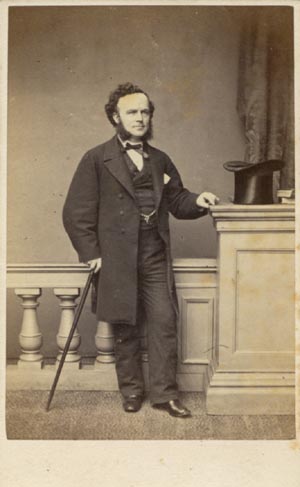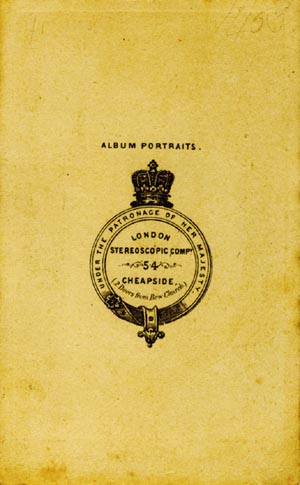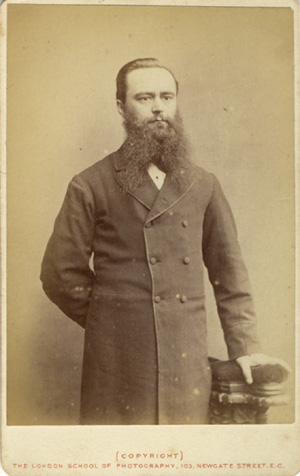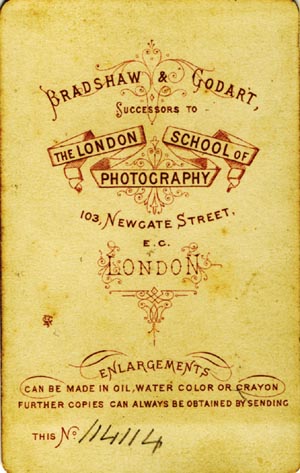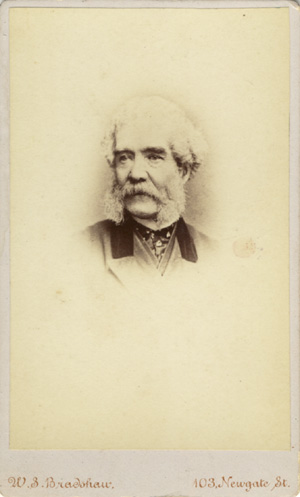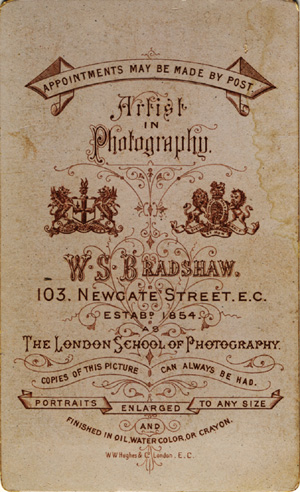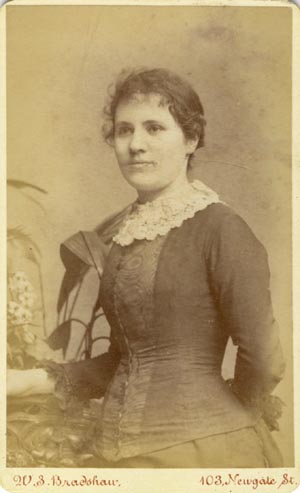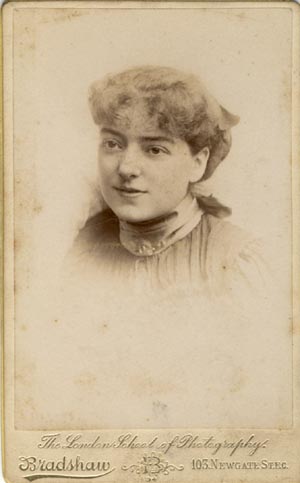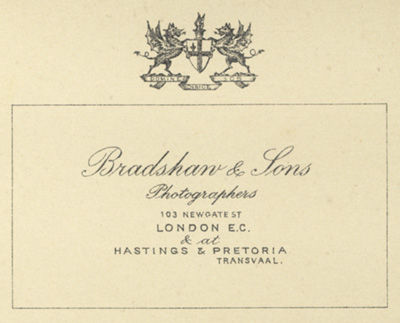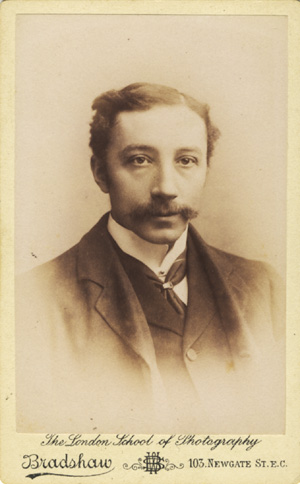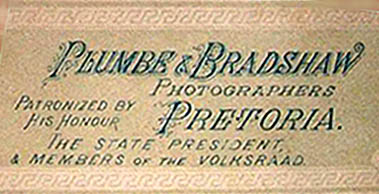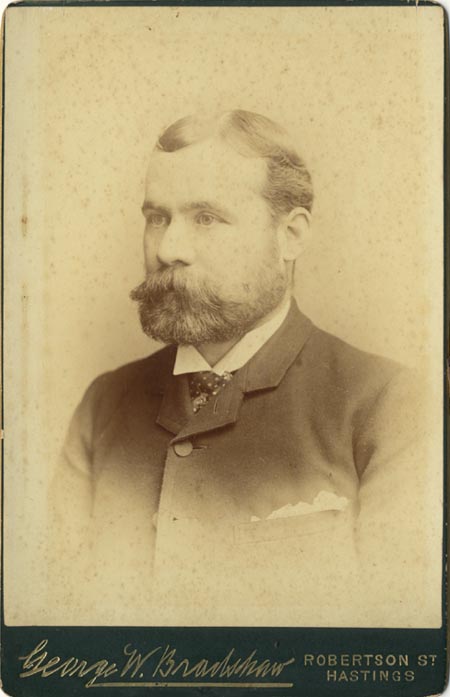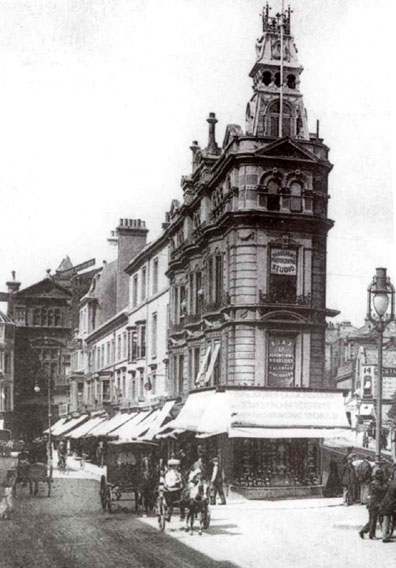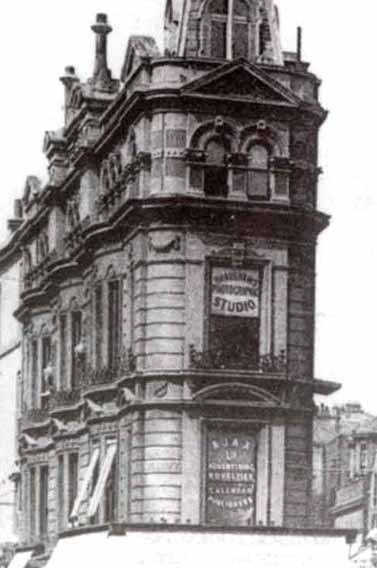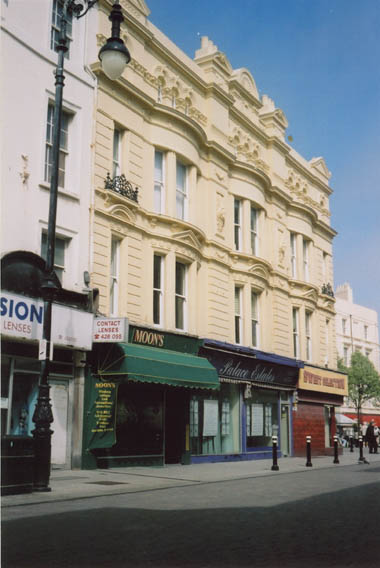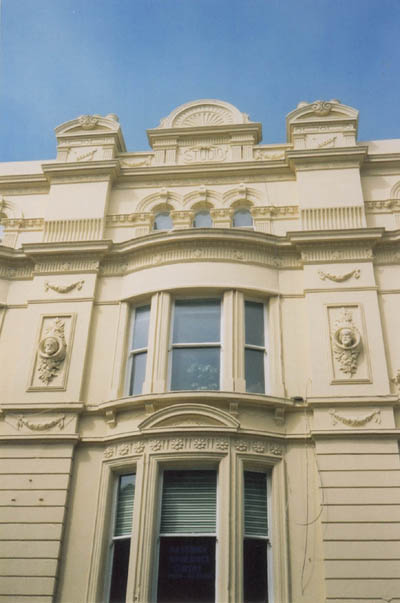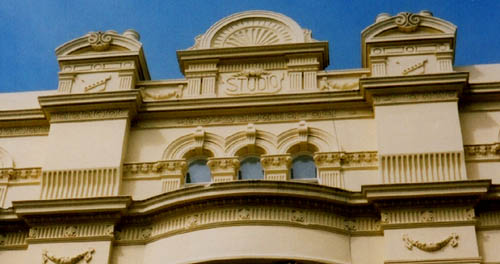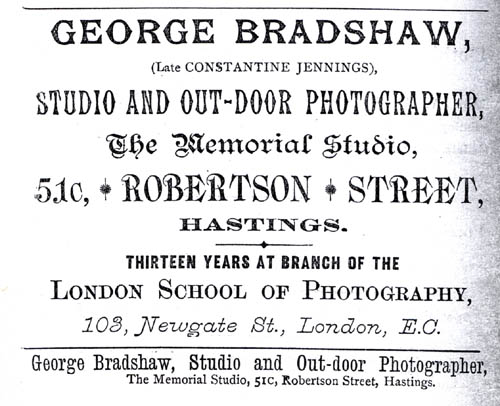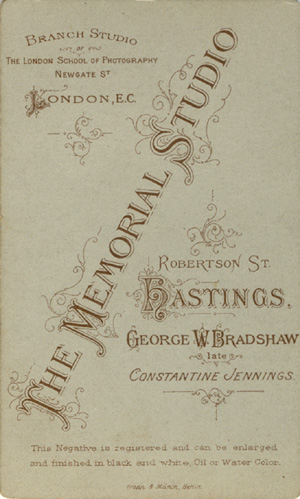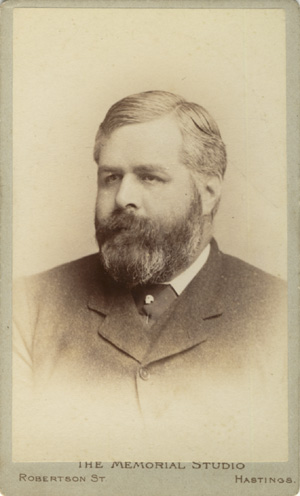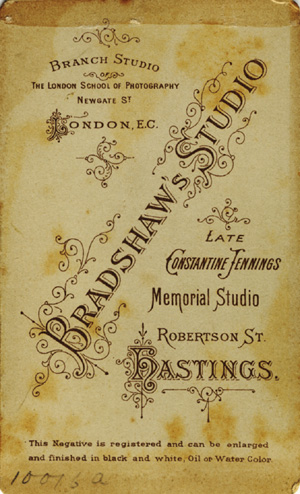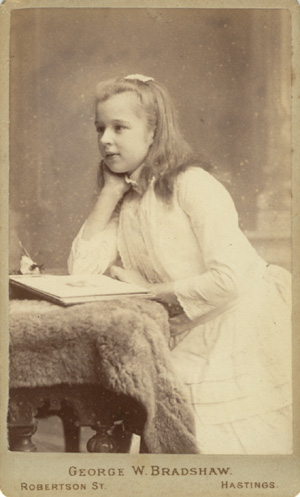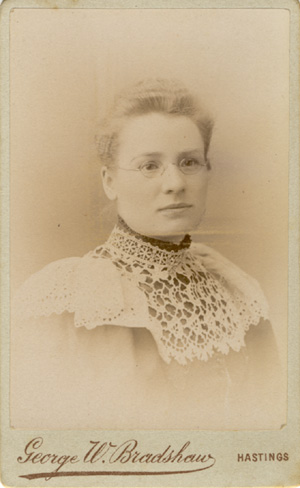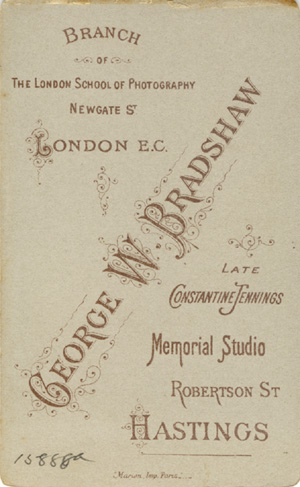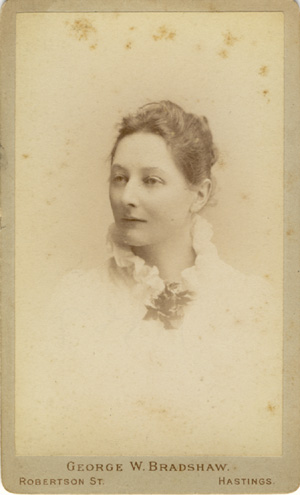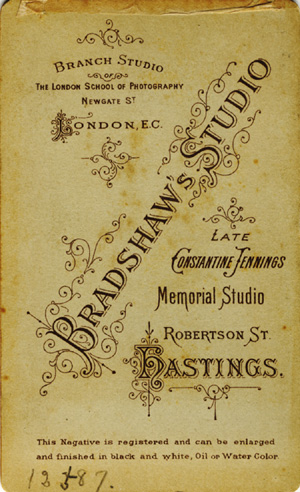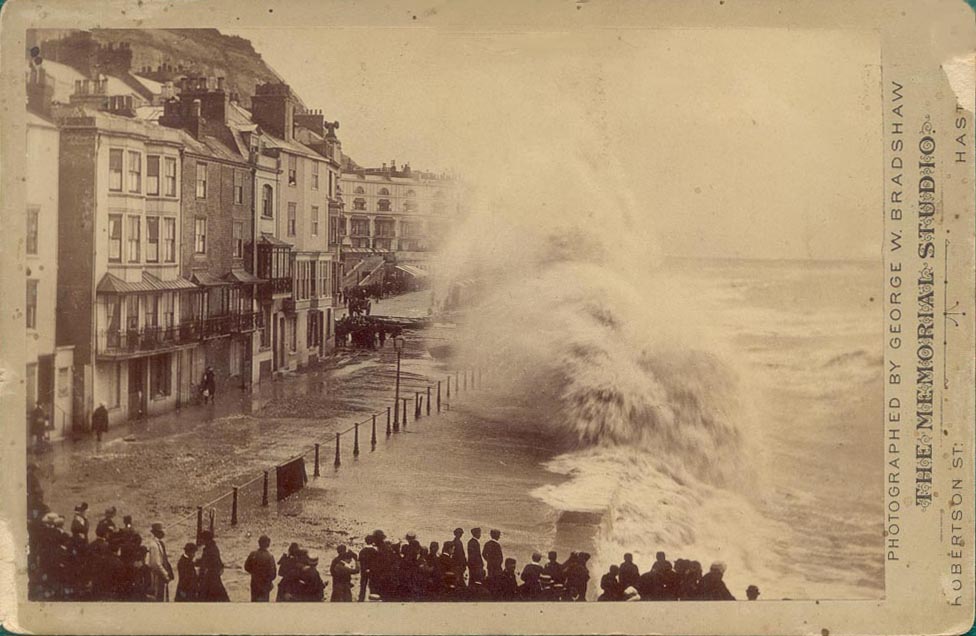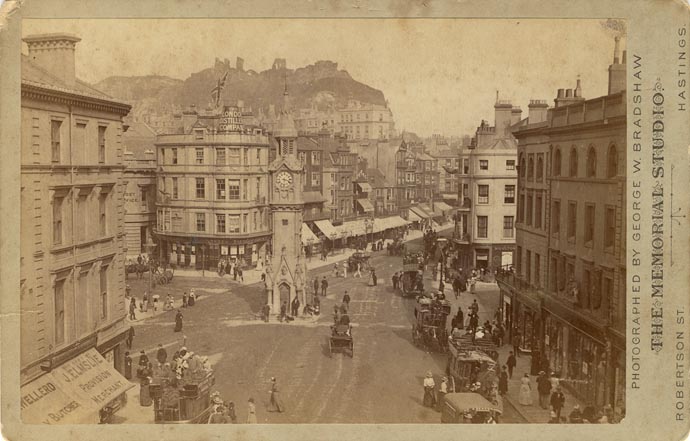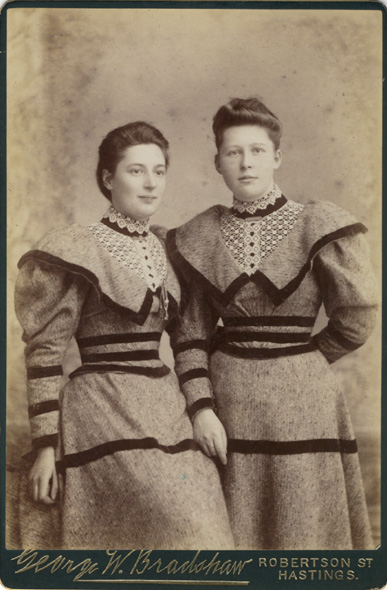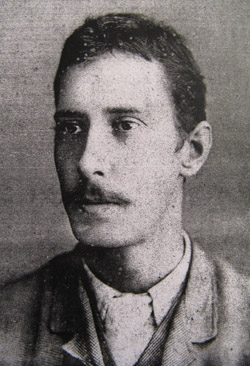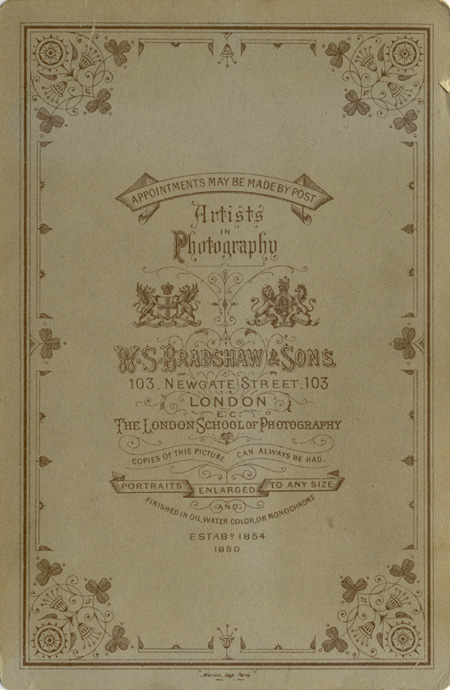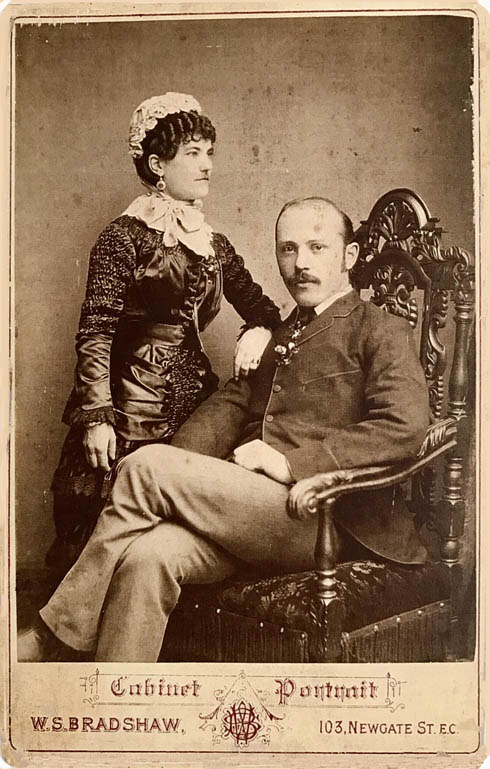|
|
| [ABOVE] Detail from the trade plate used by the photographer George William Bradshaw in the mid 1890s when he was operating the Memorial Studio in Robertson Street, Hastings. |
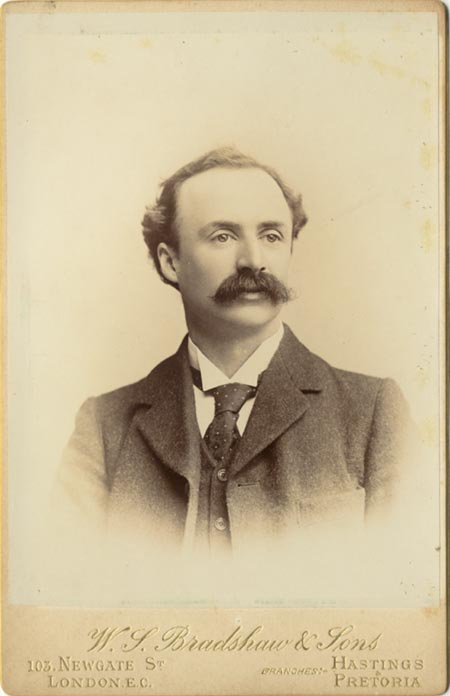 |
|
[ABOVE] Portrait of an unknown man, photographed at the London studio of W. S. Bradshaw & Sons (c1892). William Stephen Bradshaw was a veteran London photographer who had acquired the former studio of The London School of Photography at 103 Newgate Street in 1876. William Stephen Bradshaw, with the aid of his two sons, George William Bradshaw and William James Bradshaw, also operated studios in Hastings, Sussex, and Pretoria in South Africa. |
William Stephen Bradshaw, George's father, was born on 4th November 1833 at Edgware in North London. William Stephen Bradshaw began his photographic career in 1856 when he found employment as an assistant camera operator with the London Stereoscopic & Photographic Company *. Later that year, William Stephen Bradshaw married Jane Painter Marsh (born 1833, Beaminster, Dorset) in his home town of Edgware [ Marriage registered in the District of Hendon during the 3rd Quarter of 1856 ]. George William Bradshaw, the couple's first child, was born in the East London district of Shoreditch during the 3rd Quarter of 1857. A second son, William James Bradshaw, was born in Shoreditch on 6th August 1859. It is likely that during this period, William Stephen Bradshaw was employed as a photographer at the London Stereoscopic Company's photographic portrait studio in London's Cheapside.
By the time the 1861 census was taken, William Stephen Bradshaw and his family were living at 17 Brighton Terrace, Bishops Road, Bethnal Green. Jane Bradshaw gave birth to three daughters during the family's stay in Bethnal Green - Jane Eliza Bradshaw (born 1862), Ada May Bradshaw (born 1865) and Nellie Bradshaw (born 1870).
The London Stereoscopic Company*, William Stephen Bradshaw employer, was one of the most commercially successful photographic companies and a leading producer of carte-de-visite portraits. In the capital, The London Stereoscopic Company's main rival in the production of carte-de-visite portraits was The London School of Photography**. At the height of its success in the mid 1860s, The London School of Photography was operating from eight branch studios in London. Around 1874, William Stephen Bradshaw joined the rival firm and worked as a photographer at the London School of Photography's studio in Newgate Street. In 1876, William Smorthwaite (1822-1893), the new proprietor of The London School of Photography, began to sell off his London studios. William Stephen Bradshaw, together with another photographer Thomas Peter Godart (1848-1928), purchased the London School of Photography's studio at 103 Newgate Street, London E. C. in 1876.
Although owned by the partnership of Bradshaw & Godhart, the studio at 103 Newgate Street retained the famous brand name of The London School of Photography. On 29th January 1878, the partnership between William Stephen Bradshaw and Thomas Godart was dissolved and the studio continued under the name of W. S. Bradshaw. William Stephen Bradshaw was to retain ownership of the studio at 103 Newgate Street until he retired from the business in 1902.
When the 1881 census was carried out on 3rd April 1881, William Stephen Bradshaw and his family were residing at 103 Newgate Street, London, the site of Bradshaw's photographic studio. On the census return, William S. Bradshaw, the Head of Household, is described as a "Photographer", aged 48. George W. Bradshaw, William's twenty-three year old son also gives his occupation as "Photographer" and was presumably assisting his father in his Newgate Street studio. William Stephen Bradshaw's wife Jane and their three daughters Jane, Amy and Nellie are recorded at the family home in Newgate Street, but there is no mention of his second son, twenty-one year old William James Bradshaw. William James Bradshaw (1859-1921) was also a professional photographer and there is some evidence that he was operating as a photographer in South Africa in the 1880s and 1890s. William James Bradshaw does not appear in the index of the 1881 census and he might have already arrived in South Africa by this date. After William Stephen Bradshaw established the firm of W. S. Bradshaw & Sons in 1885, he mentioned in his publicity that he had branch studios in the Sussex seaside resort of Hastings and in Pretoria, South Africa. By 1887, W. S. Bradshaw's eldest son, George William Bradshaw, was running the branch studio in Hastings and it possible that William James Bradshaw was in charge of the South African branch studio in Pretoria.

